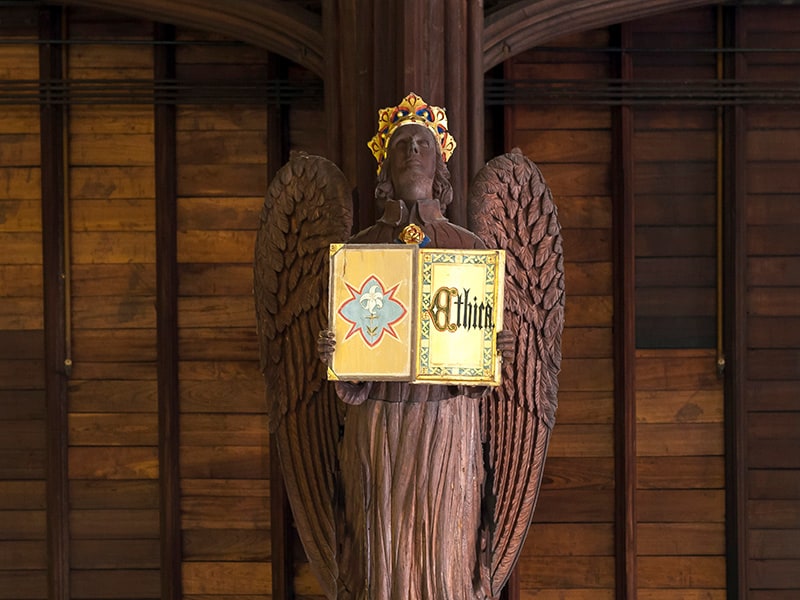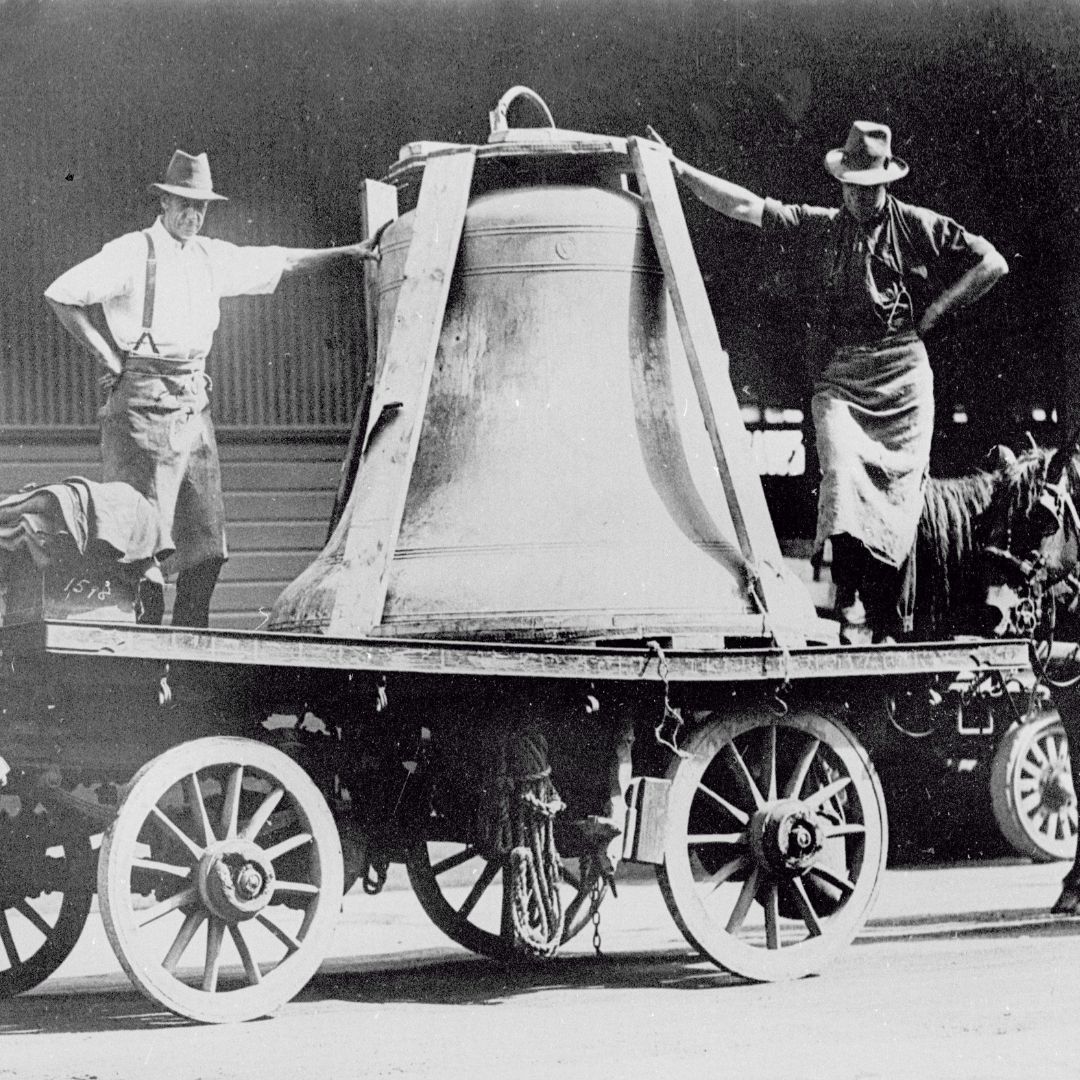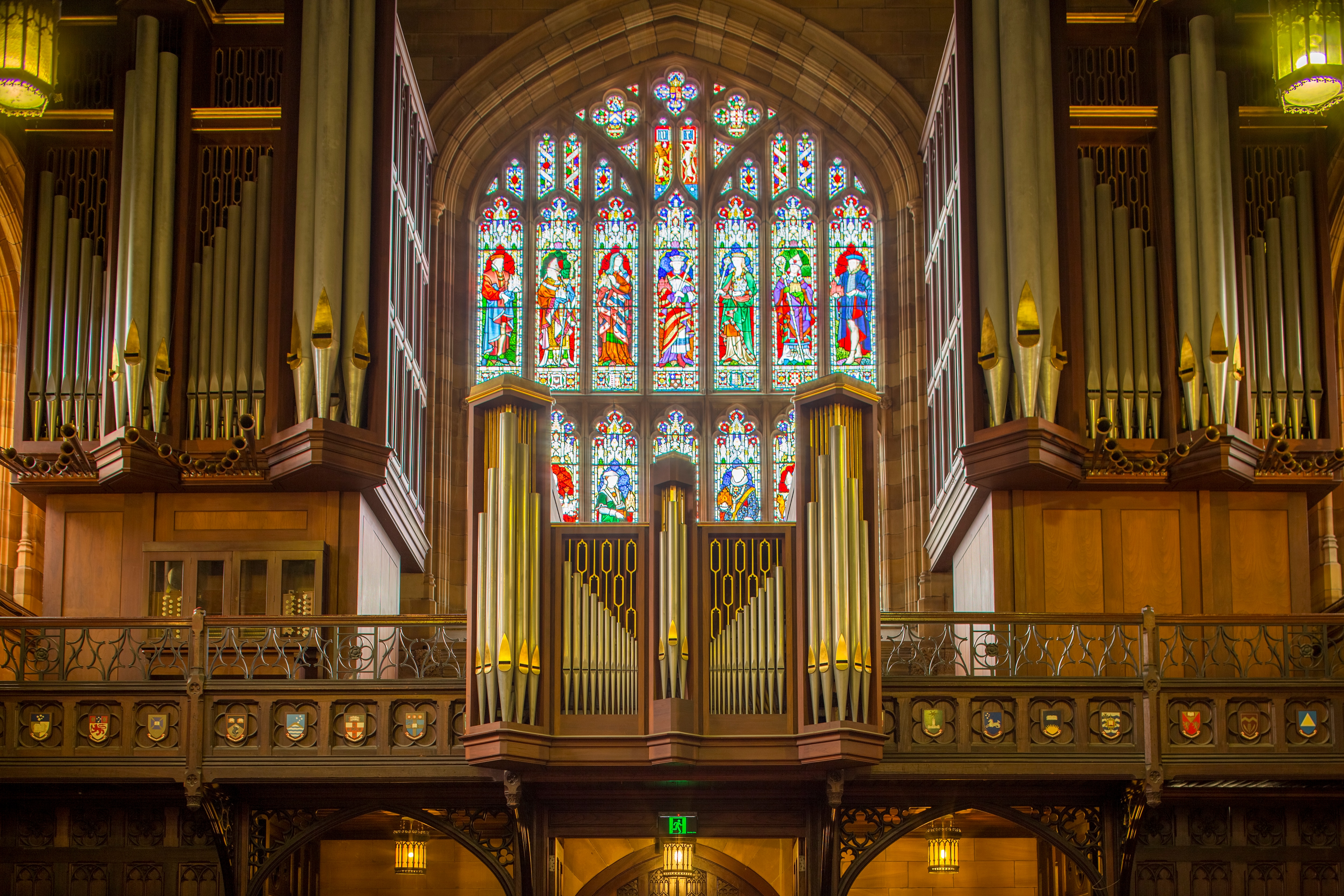Places of interest
Every place on campus tells a story
The University's heritage buildings are part of everyday life for our students, staff and community and also play a central role in graduation ceremonies, major events and even the occasional wedding.
In 1854, Edmund Thomas Blacket began designing the University’s Great Hall, the first of the buildings that would form the Quadrangle. The original colonial architect, Blacket’s design was intended to mirror the Tudor Gothic style seen in the London Guildhall, the Banqueting House at Hampton Court Palace and Westminster Hall in England.
The foundations were laid in 1855 and by July 1859, the Great Hall was ready for unveiling. A grand music festival was held over a week to commemorate the momentous opening of University buildings to the public.
Construction of the rest of the Quadrangle continued until 1966 with the completion of the Western Tower. The Quadrangle is considered the symbolic heart of the University.
The Great Hall is used for a range of University events including graduation ceremonies, musical productions, plays, banquets, public lectures, book launches, balls, exams, memorial services, fairs and book sales.

Complete with stained-glass windows, gables and gargoyles, it’s no wonder our Quadrangle is often compared to Hogwarts. The NSW Government's Office of Environment and Heritage has described the group of buildings that form the main Quadrangle as "probably the most significant group of Gothic Revival buildings in Australia".
An iconic feature of the Great Hall is the sloped roof, built in hammerbeam style to resemble that of Westminster Hall in London. Look up and you’ll see 12 carved wooden figures of angels sitting among the beams holding items that reference the arts and sciences – Grammar has a papyrus roll, Dialectic has Aristotle’s diagram of the three syllogistic figures, Poetry has a harp, Ethics has a St Mary’s lily, Metaphysics has a symbol of the Deity, Arithmetic has an abacus, Geometry has the 47th proposition of the first book of Euclid, Astronomy has a star, Music has a lyre, and Physics has an ancient air pump. An angel of knowledge originally sat atop the eastern gable but was removed in 1874.
If you walk through the Quadrangle on a Tuesday at lunchtime, you’ll hear the bells of the carillon chiming from the Clocktower. Played live by one of our team of dedicated carillonists, you will hear anything from a classical song to a familiar tune, like the theme song from Game of Thrones, or maybe a Disney classic or a current pop song.
This rare instrument is one of only three in Australia. Known formally as the University of Sydney War Memorial Carillon, it was dedicated on 25 April 1928. We will celebrate its 100th anniversary on Anzac Day, 2028.

The Carillon commemorates the 197 undergraduates, graduates and staff who died in the First World War. The National Carillon in Canberra, dedicated in 1970, is a sister carillon to the University of Sydney War Memorial Carillon.
In 1973, the top bells were returned to the original founders for recasting and, at the same time, five additional small bells were cast. The rebuilt carillon now has 54 bells and a range of four and a half octaves.
The lowest note, called the bourdon, is G on the bottom line of the bass stave (A flat in terms of pitch). This bell weighs approximately four and a half tonnes. The 23 lower bells were cast by the Taylor Bell Foundry of Loughborough, England. The upper 31 treble bells were cast by the Whitechapel Bell Foundry of London.
The carillon is played on Tuesdays and Sundays 1-2pm throughout the year.
There are no recitals during exam periods and on public holidays.
You can book carillon performances for weddings and other occasions.
Tours follow carillon recitals. Book a carillon tour.
Manager, University Carillon and Organ

The present organ, completed in 1972, was designed by Rudolf von Beckerath of Hamburg, Germany, and built in conjunction with Ronald Sharp who built the Sydney Opera House organ. They were assisted by architect T.E. O’Mahony and the Deputy Principal’s Office.
Prior to the von Beckerath Organ, the University's first organ was built by Forster and Andrews and was inaugurated in 1882, being rebuilt between 1928-1933.
The organ has three manuals and pedals, a mechanical key and electric stop action, 54 stops, 79 ranks and 4005 pipes. The cedar case, which blends harmoniously with the architecture of the Great Hall, was constructed in the University’s Joinery Shop.
Looking towards the organ, the three manual and pedal console can be seen on the left. Above it are large principal pipes from the Great division (middle keyboard), with the rest of the Great pipes situated immediately behind these display pipes. Above the Great is the Swell division (top keyboard), which is the expressive section of the instrument enclosed in a large wooden box with front shutters operated by the Swell pedal at the console. In the centre of the gallery, jutting out into the hall, is the Ruckpositiv division (bottom keyboard), and on the right side, the Pedal division.
Arranged symmetrically across the two large cases are the spectacular horizontal pipes of the Chancellor’s Trumpet stop, added in 2012 by the Beckerath company to mark the 40th anniversary of the organ, as a gift from the University's Chancellor’s Committee.
Performances are posted on the University's events calendar.
Manager, University Carillon and Organ
The University has been through over 150 years of transformation, visible through our landscapes and buildings.
Our grounds are a lush, green space, filled with native plant species and bird and insect life. The best way to explore them is on foot.